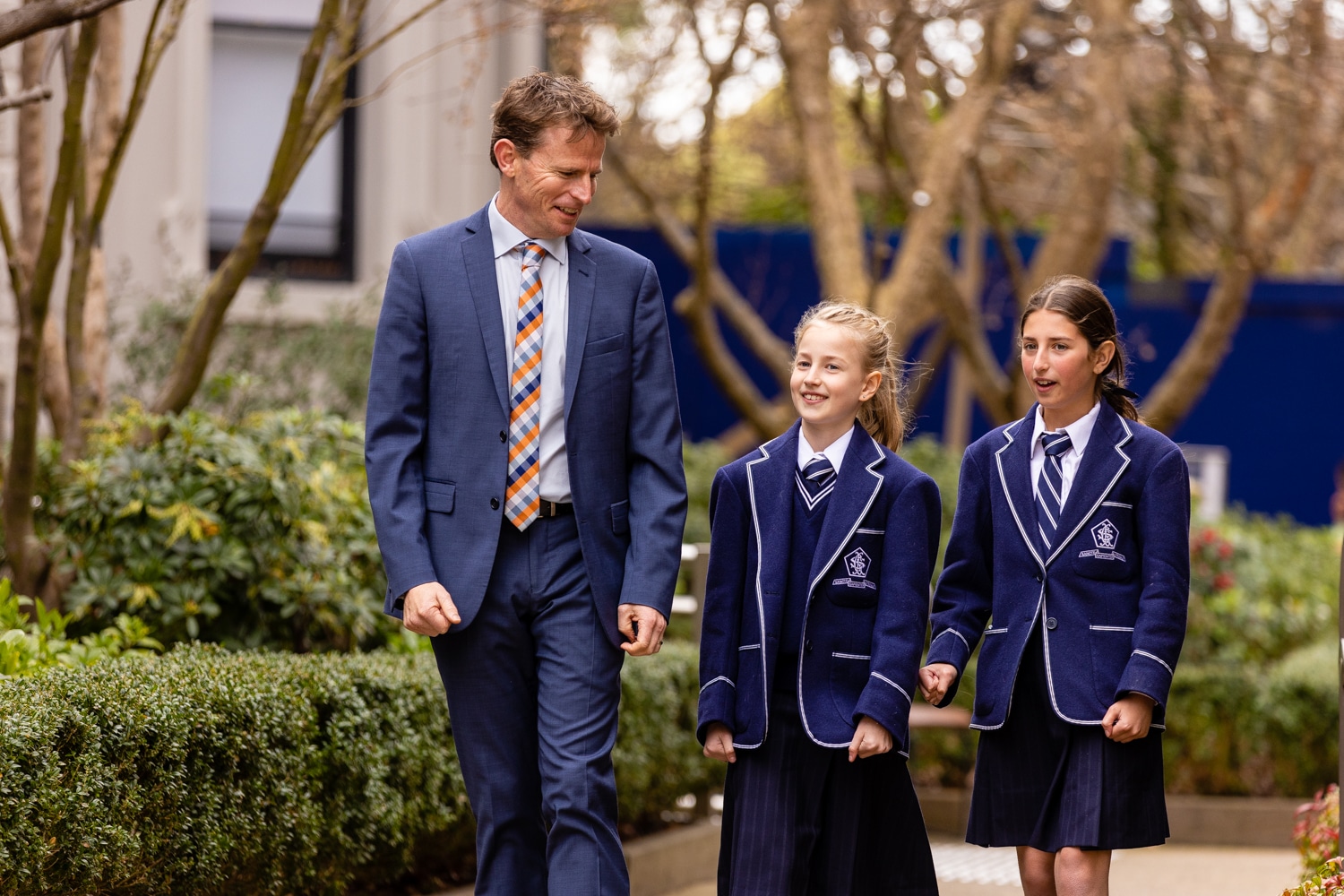School Readiness
Featured in the Age’s Independent Schools Advertising Special on Saturday 29 April 2023 – Chris Toms, Vice-Principal and Head of Junior School contributes to the conversation surrounding readiness for school, in particular the considerations for starting Prep.
Starting primary school is a big day in the life of a small person. Most children, and their parents, are champing at the bit. Others, not so much. Some kids are just not ready.
“I believe prep readiness is more about a child’s emotional maturity and social competence,” says Chris Toms, Vice-Principal and Head of Junior School at Lauriston Girls’ School.
“Do children show resilience? Can they adapt to change? Do they express their feelings? Can they play with others well? Do they show independence? At Lauriston, we speak openly with parents about these indicators.”
Formal schooling starts with prep in Victoria and kindergarten in NSW. Most Australian children begin formal schooling in the year they turn five. But research suggests – and the experts on the (play)ground know – there is much more to school readiness than age.
Lauriston provides a resource, Is your child ready for prep? This checklist can help parents gauge readiness and covers elements of early childhood development including emotional maturity, social competence, language, communication and cognitive skills, and physical ability. Toms says parents often associate school readiness with literacy and numeracy skills, as these lay the foundations for future learning. But there is much more to consider, and the school created its checklist during the latter stages of the pandemic as part of a wider parent information program.
“Following so much time in lockdown in Melbourne, we found parents wanted to understand what early childhood developmental areas can gauge a child’s readiness for prep,” Toms says.
“Parents have told us the checklist provides them with the questions and language they need to have informed conversations about how to help identify areas to work on or help inform them about when and where to send their child to school.
“We don’t want children to just cope in their prep year; we want them to flourish.”
Children in Victoria can enrol at prep level if they turn five by April 30 of the enrolling year. Parents with children born between January and April have a choice to make: enrol their child at age five or delay until they turn six. Toms says parents often seek guidance about whether their child might struggle if they enrol at a younger age or be bored if they wait. “Children develop at different rates and there is no one-size-fits-all answer. Sometimes, the gift of time, for children who complete an additional year of pre-school, can be highly beneficial.”

Delaying sending a child to school, particularly boys, until age six, has long been studied in Australia and abroad. Sometimes known as “red shirting”, parents of boys who delay formal school entry do so hoping to give them time to catch up with their female peers.
Delaying is far more common among wealthy families than poorer ones.
Julian Wilcock, the headmaster at John Colet School in Sydney’s Belrose, agrees the often-asked question about delaying the start of school mostly comes from the parents of boys.
“In general terms, boys take longer to mature than girls and more boys than girls benefit from a delayed start. Having said that, all children are individuals and some will benefit from greater challenges. Children who are incorrectly held back can become bored and disengaged.
“As a rough guide, girls are usually ready for formal schooling if they have turned five by July [in NSW]. Boys are sometimes less mature and perhaps should have turned five by March. If a child has no specific diagnosed developmental issues, they should be ready for school.
“My general advice is for parents to stick to the standard age requirements and enrol for the age-appropriate year. If they are concerned about their child’s readiness closer to the start of school, they should talk to their preschool or consult the school they have enrolled at, as they are experienced in assessing whether a child is school-ready.”
Wilcock says parents should take their time in making the decision as it will also determine the cohort they will be with throughout their schooling, including university.
“Children in the younger range in kindergarten will also be the youngest in their group in adolescence when they are dealing with peer pressure and independent decision-making,” he says.
“It is not simply a question of academic readiness. Studies show that children in the higher age range are more likely to have greater confidence, be picked for sporting teams and be offered leadership positions.”
According to the 2018 Australian Early Development Census, one in five children in NSW start primary school with a vulnerability in either physical health, social competence, emotional maturity, language and cognitive skills or communication skills and general knowledge.
In recent years, partly driven by sliding performances revealed by NAPLAN results, a lot of research, commentary and government policies have centred on early learning years.
In NSW, fees for eligible children attending public and private preschools are subsidised. Victoria’s Free Kinder program sees eligible three-year-olds receive between five and 15 hours of funded learning each week, with four-year-olds eligible for 15 hours a week. Both the Victorian and NSW governments have announced that by 2030 all eligible children will have access to 30 hours a week of play-based learning before they start formal school. That may, in turn, see many more children begin school at age six rather than five. Until then, the questions and angst about when a child should begin their formal schooling remains with parents.
SHARE THIS ON

